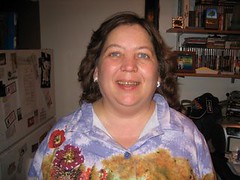 "The Bunch of Bananas"
"The Bunch of Bananas"I recently read a short story in Highlights for Children magazine. To summarize, it was about 2 monkeys named "Mingo" and "Bingo" who needed to bring bananas home to their mother. On the way back to "Mom", Mingo passed the bananas to Bingo to take home because he was distracted by a friend who wanted to play, then Bingo saw a rabbit and passed them off to the rabbit to take home, because he had also been distracted by a friend that encouraged him to play. To make a long story short, the rabbit passed it off to a rhino, but the rhino didn't hear or see the rabbit say, "take these to Bingo's Mom", as we discover later. The rhino only saw someone had left the bananas there. So Mingo comes home and asks Bingo where the bananas are, and Bingo asks the rabbbit, and the rabbit says the rhino was supposed to bring the bananas. The rhino comes and the rabbit asks where the bananas are. The rhino states that he ate them! Rhino says, "I never saw or heard you. They made a great snack!" At the end Mingo and Bingo are sent back to the store for another bunch of bananas-but!! this time they come straight home!
My review: I believe this children's story is appealing due to the characters being animals, the rhyming of the brothers, "Mingo" and "Bingo"-rhymes seem to attract children's attention, and the lesson that it teaches at the end through example of learning something the hard way, before learning to do the right thing.
As I learnt from studying some children's writing material, this story has a beginning, middle, end, characters' point of view, a conflict, rising action, climax, and resoulution to the conflict. I also believe in children's books, there is usually a moral, value, or lesson that is learned, which is very nicely evident in this story at the end.
What I learnt from reading this story was that when reading children's stories, you can hear and see a pattern to it, like the rhyming, the interesting way a point is made, the accountability of the characters by resolving a problem, and the point of view spoken from someone a child would like relating to, for instance in this story, the animals.
I'm reviewing children's writing on my blog, because I have a strong interest in it, but more important, I want my blog to help others who aspire to become a children's writer, step by step, the way I'm still learning it.

